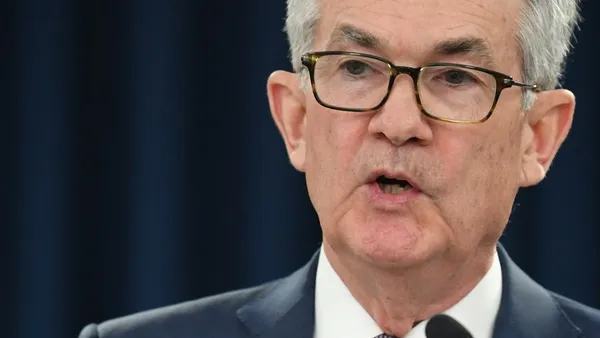Dive Brief:
- The default rate for speculative-grade corporate debt will gradually rise to 2.4% by the end of 2022 from 1.7% at the end of last year, remaining well below the 4.1% long-term average as companies navigate monetary policy tightening in many countries, according to Moody’s Investors Service.
- “The default outlook for 2022 will continue to depend on the pace of economic growth, inflation levels and central bank monetary policy in response, pandemic management and the distribution of vaccines,” Moody’s said. “Monetary policy will be critical in determining whether capital markets will remain open to high-yield companies seeking to refinance.”
- Under a pessimistic scenario, the default rate could jump to 9.1% at the end of 2022 if a new, disruptive variant of the coronavirus emerges, trade or geopolitical tensions worsen, inflation prompts a withdrawal of stimulus and a decline in liquidity, or China’s “regulatory reset” triggers a sharp decline in growth and credit availability, Moody’s said.
Dive Insight:
CFOs weighing the extent of their borrowing this year face an unusual array of risks, including the highest inflation in four decades, the prospect of another flare-up in COVID-19 and investor expectations that the Federal Reserve, Bank of England and European Central Bank will raise their benchmark interest rates.
“Inflation concerns have caused many central banks to signal plans to end quantitative easing and raise interest rates,” Moody’s said. In the U.S., “monetary policy will likely continue to support economic growth, although it will be less accommodative than it was earlier in the pandemic.”
Fed policymakers began to trim record stimulus late last year. In mid-December central bank officials penciled in three, quarter-point increases in the federal funds rate for 2022, with the first as early as their next meeting on March 15-16.
Private sector forecasters predict that the Fed will need to tighten more than three times this year. Such expectations and a surge in prices have nudged up the yield on the benchmark 10-year Treasury note to 2% from below 1.2% in August.
Efforts by the Fed to curb inflation by increasing the main interest rate may push up the default rate “but will not necessarily lead to a default rate cycle,” Moody’s said.
“Inflation is not a leading indicator of the default rate,” Moody’s said. “In fact, during the economic recessions following the dot-com bubble, the global financial crisis and the onset of the COVID-19 pandemic, inflation plummeted while the default rate rose to cyclical peaks.”
Slow monetary policy tightening probably will not shake credit markets, Moody’s said. “A gradual rate hike will increase corporate borrowing costs but will not necessarily hamper credit fundamentals significantly without economic shocks.”
Still, Moody’s did not rule out the possibility of a liquidity disruption.
“Macroeconomic trends and market conditions could turn adverse if infection rates rise significantly and put a brake on recovering economic activity,” Moody’s said. “Aggressive monetary policy tightening could pose a threat to the global economic recovery, which could slow or thwart companies from restoring earnings and cash flow to healthy levels.”
Companies focused on lodging, gambling and leisure face the prospect of a 3.6% default rate in 2022, the highest among sectors. “The sector has recovered from the lockdowns of 2020, but its longer-term recovery remains vulnerable to new virus outbreaks.”
The corporate default rate will probably fall to 1.5% during the second quarter before ending the year at 2.4%, according to Moody’s.
“We think these forecasts are in line with the overall strong fundamentals among rated issuers,” Moody’s said. “These fundamentals include good earnings, healthy balance sheets and robust liquidity.”
The pandemic-period default rate peaked at 6.9% in Dec. 2020, far below the 13.4% in Sept. 2009 during the global financial crisis, Moody’s said.
Construction and building companies defaulted last year at a higher rate than any other sector, Moody’s said. Eight of the nine companies unable to pay off debt were in China, where regulators took steps to reduce leverage in the property market.















